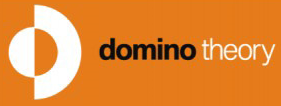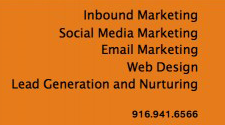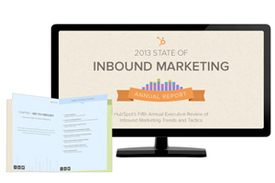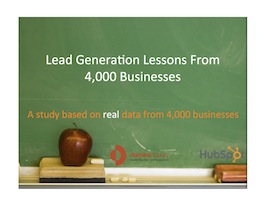Outbound marketing consists of any effort that that attempts to put messages about your products and services in front of an audience that has yet to ask about them.
Think TV and radio commercials, print ads, billboards, direct mail, cold calls, and traditional web banner ads.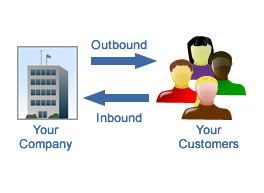
The concept is that by inserting your message into an environment where you believe there to be potential customers, you have the opportunity to convert them. The problem is that this makes the assumptions that this audience is in fact looking for the products and services you offer, that the message you put in front of them is the message they want to see/hear, and that your product and pricing fits their needs.
Do you really want to trust your business growth to assumptions?
It used to be marketers had no choice, but then something happened to change all that – the Internet!
The promise that the Internet offered marketers from the beginning is that everything is accountable. That used to mean that your Internet ad reports would deliver the exact number of people who loaded your ad and the exat number of people who clicked. While that is more than traditional media could offer, it didn’t change the game,
As data collection has become more sophisticated and as product research has shifted from your sales team’s realm to the search engines, the power of information has shifted from the information provider to the information seeker. This, in turn, has dramatically changed the ways in which business communicate with prospects and customers.
In the B2B world, if your target market was, say, accountants located anywhere in the United States, the best way to reach as many possible was to buy advertising magazines, newsletters and web sites frequented by accountants. Your ad would be in environment surrounded by accountant specific content – as would the ads from all of your competition. In essence, you needed to piggyback on the editorial content in the hopes that your message would sufficiently resonate in order to get the reader to read your message instead of the editorial content they were there for in the first place.
This is a tough task, but you could always take heart in the knowledge that you knew the magazine was being read by accountants, and accountants are your customers and prospects, so there fore, someone must be interested in your product in service and eventually it should lead to a sale. Right?
Seriously, this is how ad dollars are traditionally allocated! Based on the assumption that if your message is in the right environment, there must be someone in that environment who will buy from you. Doesn’t sound very sophisticated, does it? But, because the accounting media controlled access to the mass of accountants, there was no other choice.
That model is broken. Continuing our example, the news and information accountants need is no longer limited to the monthly magazine or weekly newsletter distributed by the accounting media. All the information accountants need is available online – somewhere…
This is where inbound marketing comes in. Inbound marketing takes advantage of knowing what it is your customers and prospects are searching for online and allows your solution to show up on the first page of their search.
Of course, this is only the start. The information you provide needs to be insightful, relevant, and timely - all the things the paid media you bought ads in used to be. The key difference? Instead of piggybacking on the content delivery, your company delivers the content!
Not only do you cut out the media middleman, but all the at expertise you offered to share with the editor of the accounting press over the years now becomes the tool that not only demonstrates your expertise,but also attracts customers and prospects to your site!
This is not say that there isn’t a place for outbound marketing, there is. But given that inbound marketing should get a bigger and bigger piece of your attention and budget, it only reasons that that attention and money is coming out of outbound efforts. Unless inbound marketing budgets come from an entirely new bucket, highly doubtful, it only stands to reason that the result is less outbound marketing.

